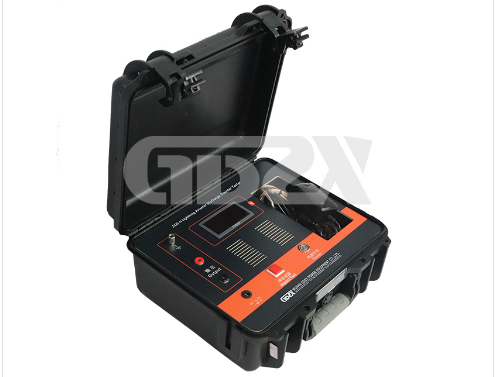NEWSnews
Validating Surge Arrester Counter Performance: The ZXJS-II Tester Advantage
Introduction: The Critical Role of Discharge Counters
Within the protective shield of high-voltage power systems, surge arresters (lightning arresters) are the first line of defense against destructive transient overvoltages, primarily from lightning. Crucially attached to these arresters are Discharge Counters. These devices are not mere accessories; they are vital diagnostic tools. Their core function is to accurately record the number of surge events (lightning strikes or switching surges) the arrester has safely diverted to earth. This data is indispensable for:
1.Preventive Maintenance: Tracking surge activity helps predict arrester wear and plan timely replacements before failure.
2.Lightning Density Mapping: Providing ground-truth data for system vulnerability assessments.
3.Fault Analysis: Correlating recorded counts with system events aids in post-incident investigations.
4.Performance Verification: Confirming the arrester is actively engaging during overvoltages.
The Challenge: Ensuring Counter Reliability
A counter that fails to increment, increments falsely, or jams provides misleading data, potentially leading to incorrect maintenance decisions and compromising system risk assessment. Historically, verifying counter functionality often involved cumbersome methods:
1.Manual Simulation: Attempting to generate controlled high-current surges on-site was complex, potentially hazardous, and lacked repeatability.
2.Visual Checks/Limited Testing: Basic continuity or low-voltage tests couldn't reliably simulate the fast, high-current pulse a counter experiences during an actual arrester discharge. These methods often failed to detect mechanical binding or contact issues triggered only by the real event signature.
The Solution: Purpose-Built Counter Testers
Recognizing this critical gap, specialized testers like the ZXJS-II Lightning Arrester Discharge Counter Tester were developed. These devices are engineered to safely and accurately simulate the key characteristics of a real surge arrester discharge event directly onto the counter unit, verifying its operational readiness.
ZXJS-II: Engineered for Effective Validation
The ZXJS-II represents a significant advancement over older or improvised testing approaches. Here’s how its specifications translate into practical advantages for technicians:
Feature | ZXJS-II Specification | Advantage Over Traditional Methods |
Output Voltage | DC 1600V ±3% | Safety & Precision: Provides sufficient voltage to reliably trigger counter mechanisms without the hazards of uncontrolled high-voltage sources used in some older setups. Controlled DC is safer than AC simulation. |
Surge Current | ≥100A (8/20μs Waveform) | Realistic Simulation: Accurately replicates the fast-rising, high-peak current pulse of a real lightning surge discharge through an arrester. Low-current methods cannot verify mechanical response under stress. |
Interval | ≥30 seconds | Operational Safety & Stability: Ensures the internal capacitor bank fully recharges between tests, guaranteeing consistent output energy and preventing component stress. |
Power Supply | DC 12V (Internal Battery) / AC 220V±10% 50Hz±2% | True Field Portability: The rechargeable battery eliminates dependency on AC power at often remote substation or pole locations. AC operation provides flexibility in workshops. |
Size & Weight | 380×250×180mm / 3kg (Net) | Mobility: Significantly smaller and lighter than older generator-based test equipment, enabling easy transport and use at elevated locations. |
Core Function | Validates counter mechanical/electrical operation | Direct Assessment: Provides a definitive "pass/fail" for counter functionality under simulated real-world stress, far superior to indirect checks. |
Operational Workflow & Benefits
Using the ZXJS-II streamlines counter testing:
1.Isolation: Safely isolate the counter from the live arrester and system.
2.Connection: Connect the tester outputs to the counter terminals.
3.Initiation: Start the test cycle. The tester automatically generates the regulated 1600V DC charge, then discharges it through the internal circuitry to produce the ≥100A (8/20μs) surge current pulse into the counter.
4.Observation: Technician observes if the counter mechanism increments reliably. The ≥30s interval allows clear observation between tests.
5.Verification: A successful increment confirms operational reliability. Failure indicates the counter needs service or replacement.
Key Advantages Summarized:
1.Accuracy & Realism: The 8/20μs ≥100A surge provides a truer test of counter function than low-energy methods.
2.Enhanced Safety: Controlled, purpose-built output and isolation features minimize technician risk compared to improvised HV testing.
3.Operational Efficiency: Fast setup, automated testing cycle, and clear results save significant time compared to complex manual simulations.
4.True Portability: Battery operation enables testing anywhere counters are installed.
5.Reliable Diagnostics: Provides confidence in counter data integrity for critical system maintenance decisions.
Conclusion
For power system technicians responsible for surge arrester maintenance, the ZXJS-II Lightning Arrester Discharge Counter Tester is an essential tool. It directly addresses the critical need to verify the operational reliability of discharge counters with a level of realism, safety, and portability unattainable with older methods. By ensuring counters accurately record surge events, this tester plays a vital role in maintaining system reliability, enabling effective preventive maintenance strategies, and providing accurate data for system risk management. Investing in purpose-built testers like the ZXJS-II is an investment in the accuracy and safety of high-voltage asset diagnostics.
GDZX is a manufacturer of power detection equipment, offering a diverse range of products with comprehensive models and providing professional technical support. Contact us at +86-27-6552607 or +86-17396104357.Website: http://en.gdzxdl.com/






















